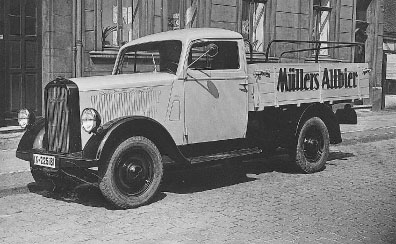Altbier is one of the few indigenous German ale styles, along with the blond kölsch from Cologne and the hefeweizens of Bavaria. It is a crisp, clean-tasting, full-bodied beer of usually 4.7% to 4.9% alcohol by volume, with a copper-brown color, firm, lacey white crown of foam, and a malty to nutty bittersweet finish. Altbier evolved over centuries in the Rhenish metropolis of Düsseldorf. Whereas southern Germany is known for its lagers, the Rhineland, like neighboring Belgium, is known primarily for its ales. “Alt” means “old”—an allusion to the old style of brewing, before the emergence of cold-fermented lager beers. The modern altbier acquired its name only in the 1800s, when this Düsseldorf original became threatened by the “new” beer—the lagers of Bavaria and Bohemia, transported there by a growing railroad network.
Altbier is a unique beer style because it requires an unorthodox, “cool” fermentation by a specialty yeast that works best in a temperature range between 13°C and 19°C (55°F and 66°F). Although most other ales are fermented relatively fast and warm at temperatures between 15°C and 25°C (59°F and 77°F) and most lagers are fermented slow and cold at temperatures between 8°C and 13°C (46°F and 56°F), altbier fermentation is somewhere in between. Because of this cool fermentation process, altbier yeast generates fewer fermentation by-products such as esters and fusel-like alcohols. In addition, after fermentation, altbiers—unlike classic British ales, for instance, but like classic Bavarian lagers—are aged in lagering tanks for 4 to 8 weeks at roughly –2°C to 5°C (28°F to 41°F). This slow, lager-like maturation allows the yeast to reabsorb much of the small amounts of esters and aldehydes it introduced into the primary fermentation. Done properly, the result of this complex brewing technique is an unusually mellow and clean-tasting ale of exceptional drinkability. Altbier is traditionally served at about 7°C (45°F) in cylindrical 0.2 to 0.4 l (6.8 to 13.5 oz.) glasses.

Photograph of a Pinkus Müller altbier delivery truck, c. 1930s, in Münster, Germany. pike microbrewery museum, seattle, wa
The typical altbier is a deep copper to light mahogany color, the result of large additions of carefully kilned, strongly malty-tasting malts, such as Munich or Vienna malts. Some altbiers are also made with a small portion of pale wheat malt, which gives the beers extra creaminess and firmer foam. In most altbiers, these malts are added to a base mash of pale pilsner malt. Some altbiers, however, are made entirely from a single-malt grist of 100% lightly kilned Munich malt. Roasted malts are rarely, if ever, used to color or flavor altbier, because the sharp, acrid notes of these malts are considered an off- flavor for the style. The altbier’s mash composition is responsible for the brew’s rich and aromatic, malty sweet finish, which is balanced by the bitterness and aroma of so-called noble hop varieties, especially Spalt hops, but also Halltertauer or Tettnanger.
Historically, the modern altbier evolved from northern German ales that were typical for the region during the Middle Ages. These were strong, well-hopped brews with names like Broyhan and Keutebier, which often contained large portions of wheat malt, perhaps as much as 40%. These medieval beers were of great economic importance in those days, because they served as a crucial trading commodity for the Hanseatic League, the European trading conglomerate of free cities that flourished between the 13th and 17th centuries. A preserved 1540–41 land record of Düsseldorf lists 35 brewers, making mostly Keutebier. Because these tradesmen were familiar with yeast, they often made both bread and beer, and the first brewers’ and bakers’ guild was formed in Düsseldorf in
Four brewpubs in particular have preserved the altbier tradition to this day. They are all located in and around the old town of Düsseldorf. In
